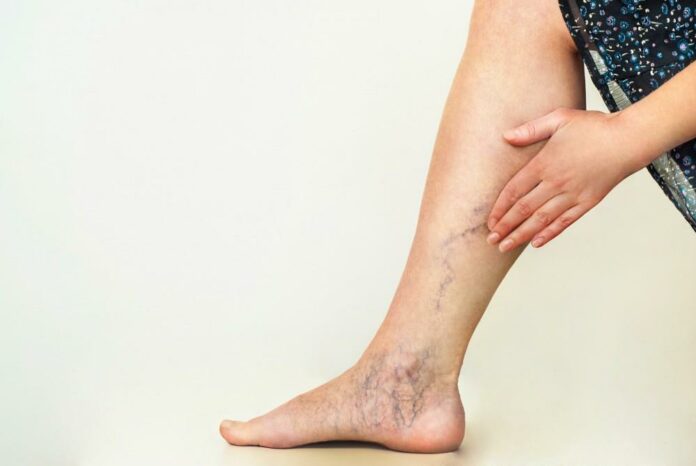Living with chronic venous insufficiency (CVI) can be challenging. However, you can improve your quality of life with the proper management strategies. This article provides essential tips for effectively managing CVI and reducing its symptoms. Implementing these tips can alleviate discomfort and promote healthy blood circulation. Also, if you follow these tips, you can minimize the condition’s progression.
Understanding Chronic Venous Insufficiency
Chronic venous insufficiency (CVI) is a condition that occurs when the veins in the legs struggle to return blood to the heart efficiently. To effectively manage CVI, it’s crucial to understand the underlying causes and risk factors.
Causes and Risk Factors
CVI often develops due to weakened or damaged valves in the leg veins. This can be caused by factors such as:
– Obesity
– Prolonged sitting or standing
– Pregnancy
– Family history of the condition
– Age
– Sedentary lifestyle
By identifying and addressing these risk factors, you can take proactive steps toward managing CVI.
Symptoms and Diagnosis
Recognizing the symptoms of CVI is important for early intervention. Common signs include:
– Leg pain
– Swelling
– Cramps
– Itching
– Development of varicose veins
Visit a varicose veins El Paso for an accurate diagnosis, which may involve:
– Physical examination
– Ultrasound
– Other imaging tests
Tips for Managing Chronic Venous Insufficiency
The following tips will help you manage CVI effectively:
1. Implement Lifestyle Changes
Implementing certain lifestyle changes can significantly improve the management of CVI. Some recommended lifestyle changes when dealing with CVI are:
– Maintain a healthy weight
– Avoid prolonged sitting or standing
– Elevate your legs
– Practice good hygiene
– Wear loose-fitting clothing and avoid tight-fitting shoes
All the previous activities can aid in improving blood circulation and contribute to better venous health.
2. Regularly Exercise for Improving Blood Circulation
Regular exercise is essential for managing CVI. Walking, swimming, cycling, and yoga can help improve blood flow in your legs and strengthen the surrounding muscles. Consult your vein doctor to determine which exercises are safe and appropriate for your condition.
3. Try Compression Therapy
Compression therapy involves wearing compression stockings to promote blood flow and reduce swelling. These specially designed garments apply pressure to the legs, helping to prevent blood from pooling and improving venous circulation. Your vein doctor will advise you on the appropriate compression level and duration of use.
4. Implement Preventive Measures
Preventing the progression of CVI is essential for long-term management. It’s important to follow preventive measures to reduce the risk of developing complications. These include:
– Avoiding prolonged sitting or standing
– Maintaining a healthy weight
– Staying physically active
– Wearing appropriate footwear
Also, taking breaks to elevate your legs and avoiding tight clothing can help promote healthy blood circulation.
5. Self-Care Tips
In addition to medical interventions, there are self-care tips you can incorporate into your daily routine to manage CVI. These include:
– Practicing good skin hygiene
– Moisturizing your legs
– Avoiding extreme temperatures
– Protecting your legs from injuries
By adopting these self-care practices, you can minimize discomfort and maintain healthier veins.
Treatments Options For CVI
There are several treatment options available for managing CVI. The most suitable approach depends on the severity of your condition. Treatment may include a combination of the following:
– Lifestyle changes
– Exercises
– Compression therapy
– Medications
– Minimally invasive procedures
– Surgical interventions
Your healthcare provider will guide you in choosing the best treatment plan for your needs.
Medications
In some cases, medications may be prescribed to manage CVI symptoms. Some medicines can prevent blood clots. These include:
– Venoactive drugs
– Anti-inflammatory drugs
– Blood thinners
These medications can help reduce inflammation and alleviate pain. However, always consult with your healthcare provider before starting any new medication.
Minimally Invasive Procedures
For more advanced cases of CVI, minimally invasive procedures may be recommended. These procedures aim to treat underlying vein issues and improve blood flow. Common interventions include:
– Endovenous ablation
– Sclerotherapy
– Laser treatment
Your healthcare provider will assess your condition and recommend the most suitable procedure.
Surgical Interventions
In severe cases of CVI, surgical interventions may be necessary. Surgical procedures can involve vein ligation and stripping or vein bypass surgery. These interventions are typically reserved for cases that do not respond to other treatment options. Your healthcare provider will discuss the benefits, risks, and expected outcomes of surgery with you.
When to Seek Medical Help
While managing CVI is possible with lifestyle changes and appropriate treatments, it’s essential to recognize when you should seek medical help. If you experience the following symptoms, it’s crucial to consult a vein doctor:
– Promptly sudden and severe pain
– Skin ulcers
– Bleeding
– Signs of infection
A vein doctor can assess your condition and provide the necessary medical intervention.
Conclusion
Managing CVI requires a comprehensive approach that combines lifestyle modifications and appropriate medical treatments. By following the essential tips outlined in this article, you can take control of your condition and improve your well-being. Consult your vein doctor for personalized guidance tailored to your needs.


